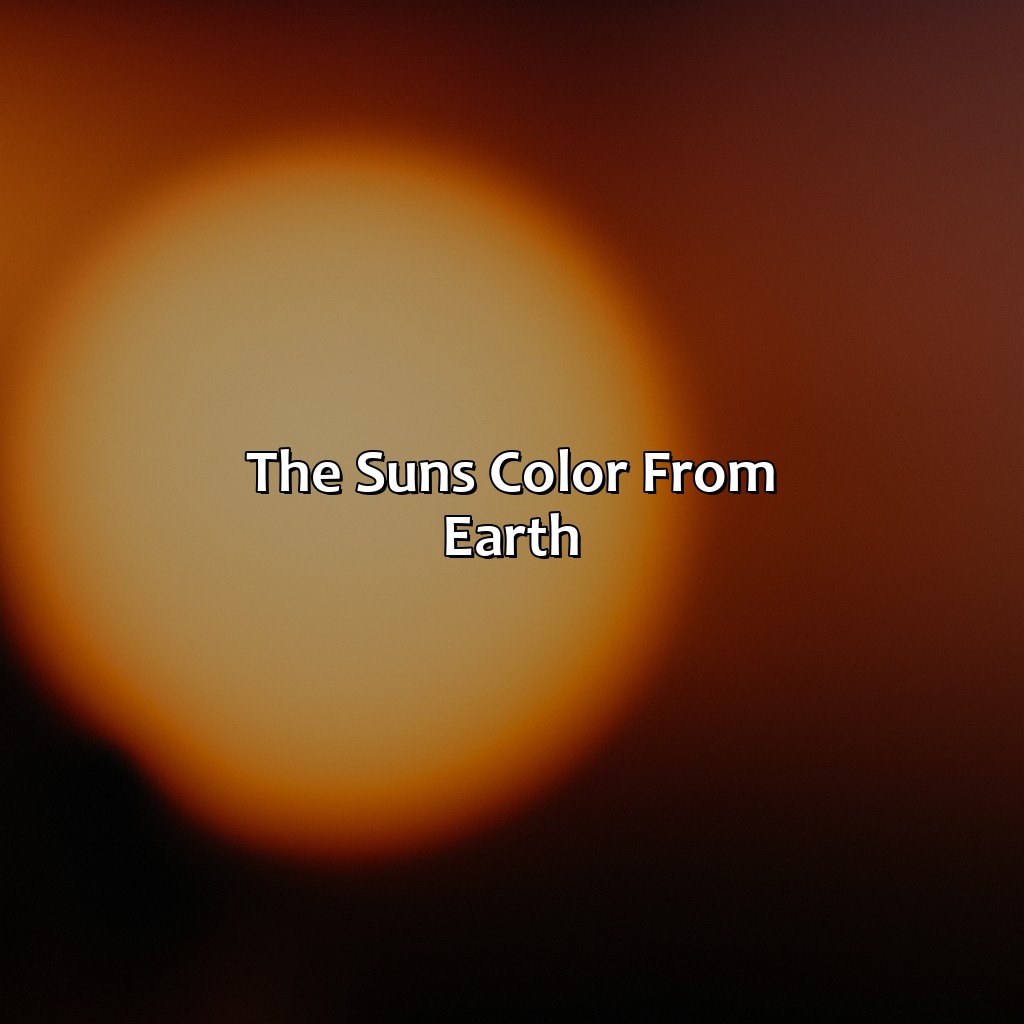Have you ever stopped to consider the true color of the sun? We see it as a bright, warm yellow in our sky, but what about in the vast, black expanse of space? Does its color change, or does our atmosphere play tricks on our perception? The answer, like many things in the universe, is a little more nuanced and fascinating than you might think.

Image: colorscombo.com
Understanding the sun’s true color is not just a matter of satisfying curiosity. It reveals fundamental truths about its temperature, energy output, and the very nature of light itself. So, join us on a journey to uncover the secrets of the sun’s spectrum, and discover what lies beyond the seemingly simple question: What color is the sun in space?
The Sun’s Spectrum: Colors Beyond the Visible
The sun, like all stars, is a giant ball of incandescent gas, primarily hydrogen and helium. Its intense heat generates a vast amount of energy, which it releases in the form of light and heat. This light encompasses a wide range of wavelengths, from the invisible radio waves to the equally invisible gamma rays. The visible spectrum, what we perceive as colors, lies somewhere in the middle.
When we look at the sun from Earth, its light travels through our atmosphere, which acts as a filter. The atmosphere scatters shorter wavelengths of light, such as blues and violets, more effectively than longer wavelengths, like reds and yellows. This is why the sky appears blue during the day; the blue light is scattered all over, giving the sky its color. The same process occurs during sunrise and sunset, explaining why the sun appears redder as it lowers in the sky. The light has to travel through a greater thickness of atmosphere, so more of the blue wavelengths are scattered away, leaving the redder light to reach our eyes.
The Sun’s True Color: A White Hot Beacon
So, if we eliminate the effect of our atmosphere, what color is the sun truly in space? The answer lies in examining the sun’s spectrum. When scientists analyze the entire spectrum of light emitted by the sun, it reveals a peak in the green wavelength region. However, our eyes are not equally sensitive to all colors. We are most sensitive to green wavelengths, which makes the sun appear white to us.
Think of it this way: Imagine a prism splitting a beam of sunlight into its different wavelengths. You would see a spectrum of colors, with the green being the brightest, but all the other colors would be present, too. Our eyes perceive this blend of colors as white. Therefore, the sun, in space, is actually a dazzling white, a burning white hot sphere.
The Sun’s Color and Its Temperature
The color of a star is directly related to its surface temperature. The hotter the star, the bluer it appears. Conversely, cooler stars tend to glow red. This relationship is known as Wien’s Displacement Law, named after the German physicist Wilhelm Wien.
The sun’s surface temperature is around 5,500 degrees Celsius (9,932 degrees Fahrenheit). This explains why the sun appears white, as stars with temperatures in this range are considered “white dwarfs.” Stars like the sun, that emit a spectrum biased towards the yellow-green are called *G-type stars.*

Image: sciencenotes.org
The Sun’s Changing Colors: A Rare Event
Although we perceive the sun as a consistent white in space, there are rare instances where its appearance might shift slightly. These shifts are caused by factors like solar flares and coronal mass ejections. These events are intense bursts of energy that can momentarily alter the sun’s overall spectrum.
Solar flares, for instance, can release enormous amounts of energy, temporarily increasing the amount of ultraviolet light the sun emits. However, these color changes are localized and temporary, meaning the sun’s overall appearance remains largely unchanged.
Beyond the Visible: Exploring the Sun’s Full Spectrum
While the color of the sun is a curious topic, it’s only a small part of the story. The sun’s true nature is revealed in its complete spectrum, which stretches far beyond the visible portion. By studying the different wavelengths emitted by the sun, scientists can glean valuable information about its composition, temperature, and magnetic activity.
In fact, many of the instruments we use to study space are designed to observe the sun’s radiation in specific wavelengths. Telescopes, like the Hubble Space Telescope, have specialized instruments that can detect ultraviolet, infrared, and even X-ray radiation emitted by the sun. By capturing the full electromagnetic spectrum, scientists gain a deeper understanding of the sun’s complex workings, and how it influences our solar system.
What Color Is The Sun In Space
A Final Thought
The question of what color the sun is in space leads us to a deeper appreciation for the complexities of the universe. We learn that what we see is just a small fraction of the reality, and that deeper truths lie beyond our senses. The sun, a blazing white sphere in the void, reminds us of the vastness and wonder of the cosmos, and encourages us to explore further, to seek answers beyond the surface. So, next time you look up at the sun, remember that the familiar yellow light is just a glimpse into its true, magnificent nature—a dazzling beacon of light and energy, shining white in the boundless expanse of space.






